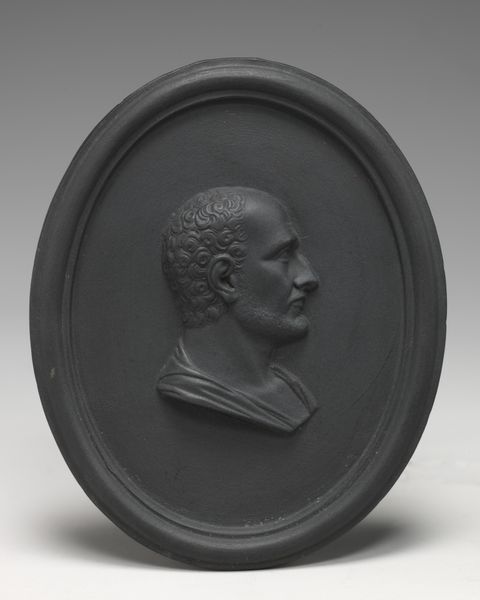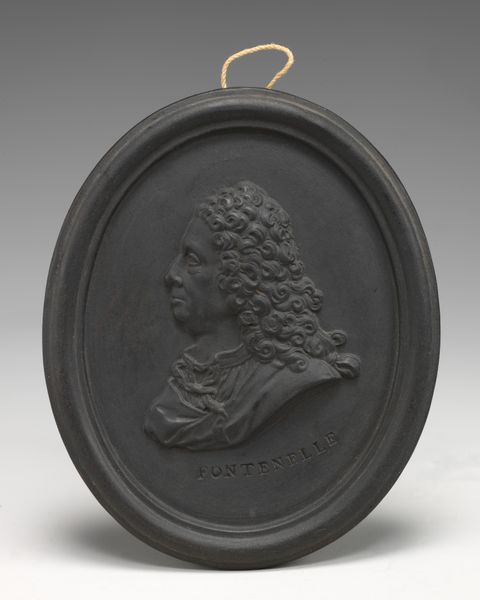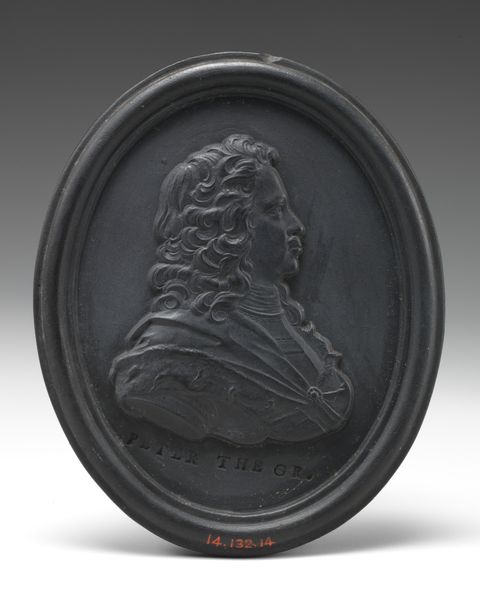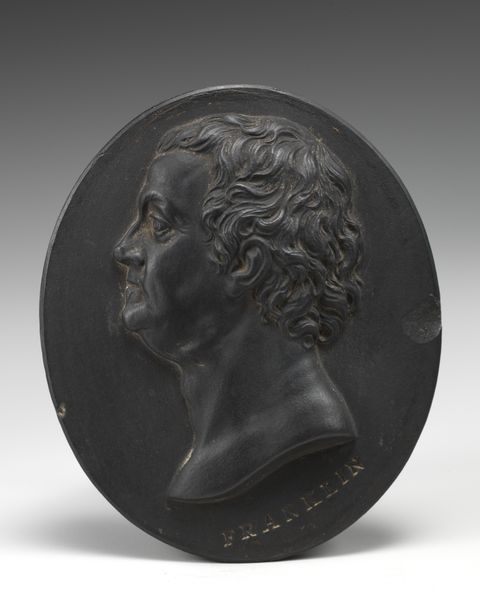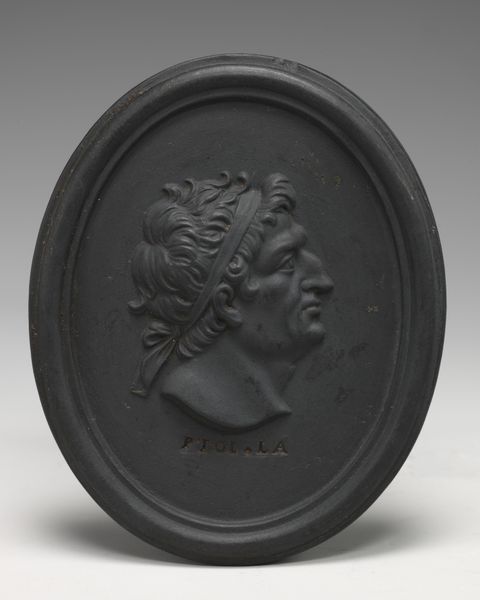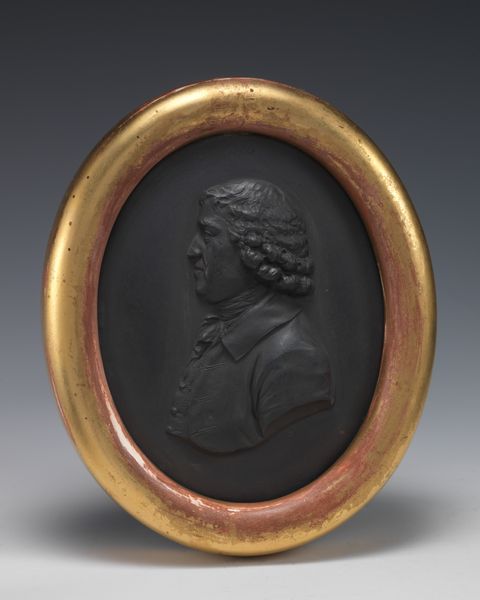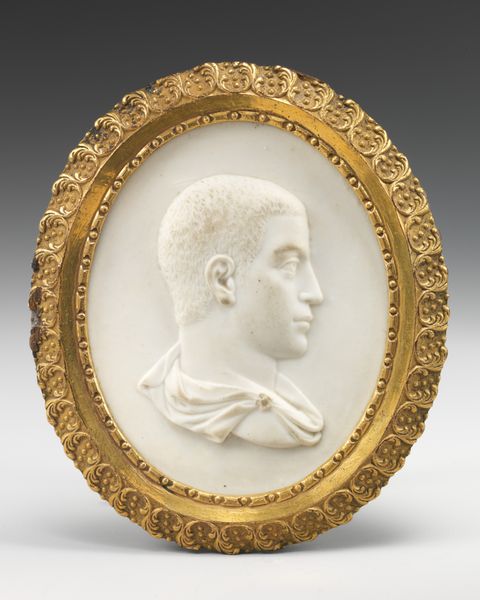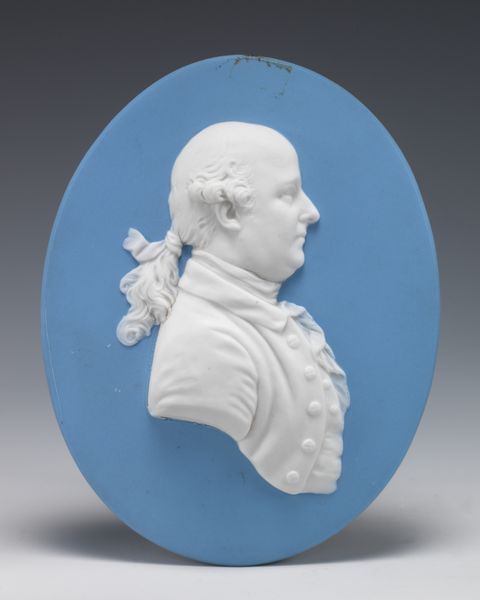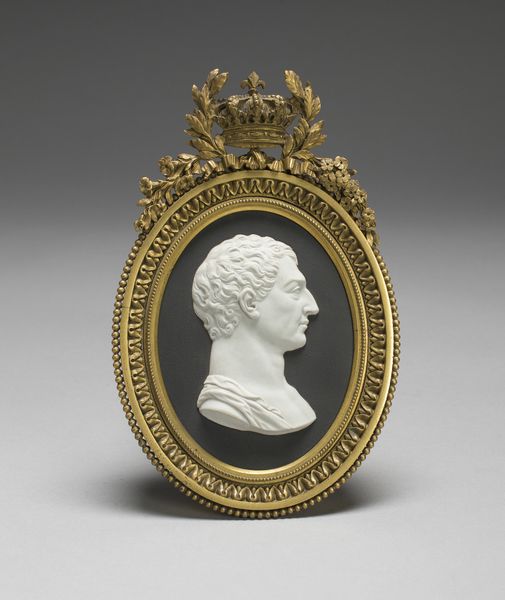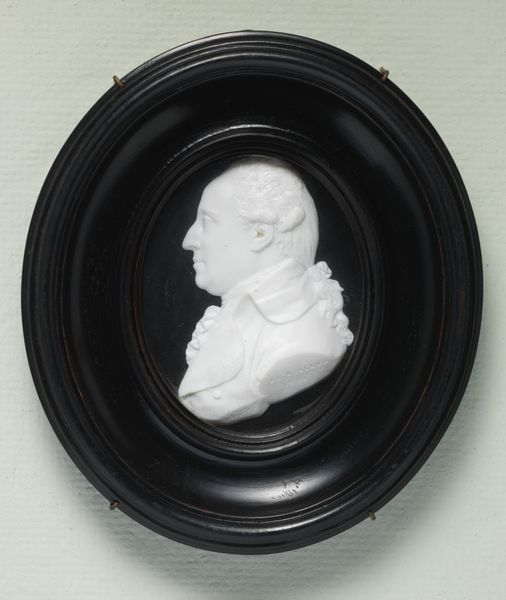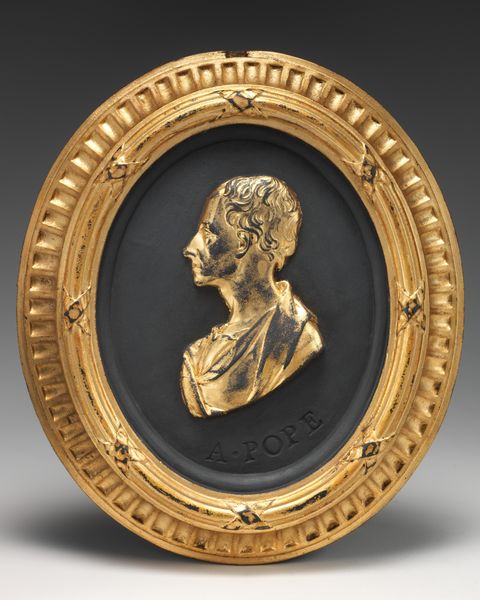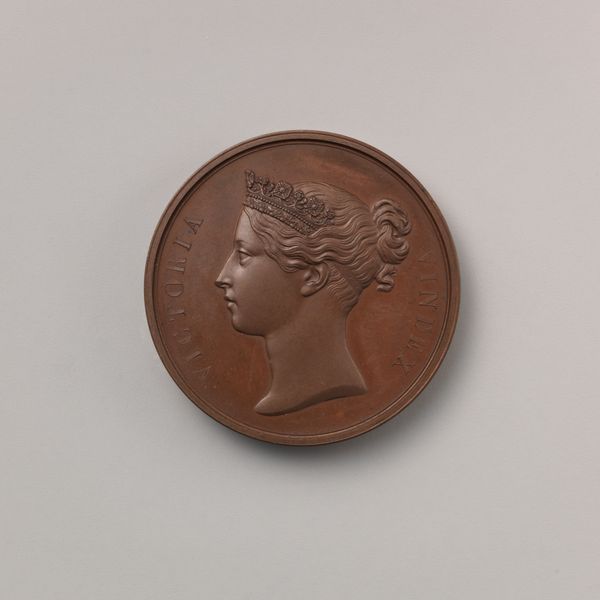
Titus (Titus Flavius Sabinus Vespasianus) 18th century
0:00
0:00
Dimensions: 2 3/4 × 2 1/4 in. (7 × 5.7 cm)
Copyright: Public Domain
This is Josiah Wedgwood's "Titus," a stoneware portrait medallion made in the 18th century and held at the Metropolitan Museum of Art. Its monochrome palette and meticulous detail draw us into the world of Neoclassical portraiture. Wedgwood, celebrated for his innovative use of materials, plays with relief here. The matte black stoneware creates a tactile surface, with a slightly raised profile of Titus in stark contrast to the flat background. Look at how light interacts with the subtle gradations of texture to define Titus's features. The oval form containing the portrait, along with the classical subject, evokes a sense of historical continuity and authority, characteristic of the Neoclassical movement. The crisp lines and simplified forms reflect a desire to return to the perceived purity and order of ancient art. In its restrained elegance, the medallion speaks to a broader philosophical interest in ideas of virtue, reason, and civic duty that prevailed during the Enlightenment. Consider the subtle, almost muted quality of the piece, and how it invites quiet contemplation. Its form and materials engage with larger dialogues about history, value, and the nature of representation itself.
Comments
No comments
Be the first to comment and join the conversation on the ultimate creative platform.
